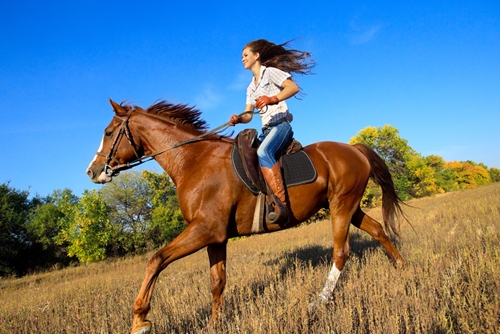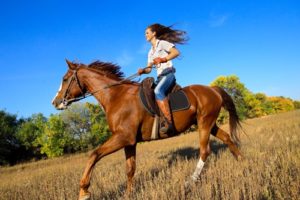A HORSE IS A HORSE, OF COURSE, OF COURSE
A Country Justice, By Kevin Denton
This is certainly the best time of year in our area for horseback riding and a good time to reacquaint ourselves with some of the New York statutes and right-of-way rules that impact horseback riding. There are a surprising number of them–and not all holdovers from colonial days, mind you, but of pretty recent vintage.
Let’s start with General Obligations Law Sec. 9-103. Landowners, I find, are often reluctant to allow riders (or hikers for that matter) to ride on their property or even to cross it. They imagine that they are automatically liable for any injury which may result. Before denying access they should at least familiarise themselves with this statute that says, in effect, that if one one permits someone to ride on his property for free, he cannot be held liable for any resulting accident unless it can be proved that he “willfully and maliciously” failed to warm them of some dangerous condition on the property. That’ a pretty high threshold for liability. Absent a unique situation like: “Oh, did I forget to tell you about my pet Bengal tigers? ” the landowner doesn’t have much to worry about. So, at least have an open mind on letting riders cross your property.
While driving you will often meet riders on the road. Who has thr right-of-way? That is nor always clear, but Article 26 of the Vehicle and Traffic Law provides some common sense rules of the road. V&T Sec. 1261 starts by declaring that anyone riding or leading a horse on the road is subject to the same rightd and duties as a motorist “…except as to those provisions which by their nature can have no application.” I suppose that last bit means horses don’t need inspection stickers , airbags or taillights–not to mention emission controls (But in light of global warming that last is a possibility!)
Seriously, though, for example, our courts have interpreted this clause to mean that the driver of a horse-drawn coach could not legally be guilty of DWI. That, the court said, was strictly for drivers of motor vehicles.
V&T Sec. 1262 requires that horses or lead on the right-hand edge of the road or rshoulder and that groups of riders proceed single file. It also says that any
rider entering the road from a driveway or secondary road shall first come to a complete stop before entering . No “Whoa there, Nellie sign is required! It is also illegal to ride on public roads at night (defined as one-half hour after sunsett to one-half hour before sunrise). Horsed-drawn carriages, however are exempted.
As for the motorist, the law places a special burden when approaching horses. Sec. 1146-a. says that every motor vehicle driver shall exercise due care to avoid colliding with any horse being ridden or led along a public highway and that they shall approach at a reasonable and prudent speed so as to avoid frightening such horse and shall pass the horse .at a reasonable distance. The same statute warns that honking your horn at a horse isn’t only stupid and rude– It’s illegal!
Finally, we have Sec. 1265 which mandates securely-fastened helmets for riders under 14 years old. Although found in the V&T Law the statute appears to apply to horseback riding anywhere and not just public roads.Violations are punishable by a $50 fine against the parent or guardian with a discretionary waiver allowed due to economic hardship. (You mean there are folks out there who can afford the horse but not the helmet?)
Now, realistically, I doubt there are flying squads of Mounties out there issuing citations for these violations but, it’s important to know then and comply with them due to that violation of a statute is good evidence of negligence and admissible in a civil accident trial.
|
|


